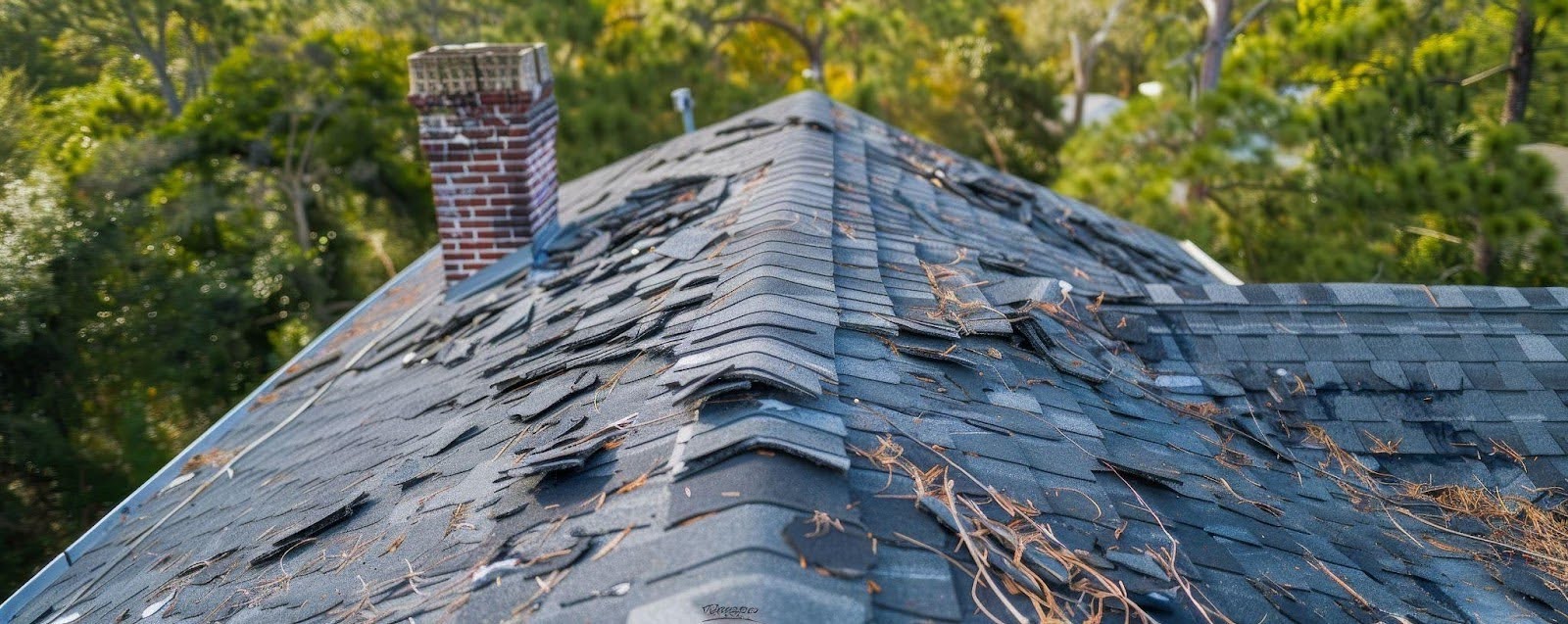Storms have a way of leaving chaos behind, turning a peaceful home into a source of stress overnight. While some damage might seem minor at first glance, hidden problems often lurk beneath the surface.
That’s where professional restoration becomes essential. Knowing when to call in experts can save you from costly repairs and keep your home safe for years to come.
From cracked siding to waterlogged walls, storm damage shows up in ways you might not expect. Ignoring small warning signs often leads to larger, more expensive problems.
Leaks become mold, cracks grow into structural failures, and weakened roofs put the entire house at risk. Acting quickly protects your property and prevents these issues from spiraling out of control.
Identifying when it’s time to seek professional help takes some insight. Not every issue is obvious, and some damage requires a trained eye to assess the full extent. This guide will walk you through the clear signs that it’s time to call a professional team.
Whether you’re dealing with leaks, structural problems, or electrical concerns, knowing what to look for keeps your home secure and your peace of mind intact.
Inspect your roof for signs of damage
Your roof takes the brunt of storm damage, making it one of the most important areas to inspect after a storm. Look for missing, cracked, or curled shingles. If you spot dents or dark patches, these could indicate hail damage. Check the edges of your roof for lifted shingles that allow water to seep in.
If you see any sagging, call a professional restoration team immediately. A sagging roof could mean structural damage that weakens the entire home. Don’t forget to inspect your gutters and downspouts. Debris-filled or detached gutters can lead to water pooling around your foundation, which causes long-term issues.
Check for leaks or water stains inside
Storm damage often leads to leaks that appear as water stains on ceilings or walls. Brown or yellow discoloration is a sign that water has penetrated your home’s exterior. If you notice peeling paint or sagging drywall, the water damage might already be extensive.
Pay close attention to your attic, where water damage often starts. Look for damp insulation, mold growth, or a musty smell. Address these signs quickly by calling a home damage repair expert to prevent further moisture-related problems, like wood rot or compromised structural integrity.
Inspect windows and doors for damage
Windows and doors are vulnerable to high winds and flying debris during storms. Check for broken glass, cracked panes, or damaged seals. Water stains or moisture between double-pane windows indicate that the seal has failed, letting water inside.
Strong winds might warp or misalign doors, making them hard to close or open.
Damaged frames or loose hinges weaken your home’s defenses against future storms. When you spot these issues, contact a professional service to secure and repair your home properly.
Examine your siding for cracks or warping
Storm damage to siding often includes cracks, holes, or warping caused by hail, wind, or debris. Even small cracks let moisture seep in, which leads to mold or rot behind the siding. Warped or buckling siding signals deeper problems that compromise your home’s exterior.
If you notice large sections of siding missing or loose, act quickly to repair it. Leaving siding unrepaired exposes your home to further damage during the next storm. A restoration team inspects your siding thoroughly and fixes problems before they escalate.
Check your foundation for water pooling or cracks
Water pooling around your foundation after a storm raises red flags. Excess water puts pressure on the foundation, leading to cracks or shifting. Look for new or widening cracks in your basement walls or floor. Horizontal cracks often indicate structural strain caused by water damage.
A damp or musty smell in your basement points to water seeping in through the foundation. Don’t delay when you see these signs. Home damage repair specialists evaluate and address foundation issues to prevent costly repairs later.
Look for damage to outdoor structures
Decks, fences, and other outdoor structures often bear the brunt of storm damage. Check for loose or broken boards, bent posts, or leaning sections. A weakened deck or fence poses safety risks and reduces your property’s curb appeal.
Inspect outdoor furniture, sheds, or playsets for dents, cracks, or shifting. Professionals assess the extent of damage to outdoor structures and restore them safely to their original condition.
Assess your yard for uprooted trees or damage
Storm damage to trees and landscaping can create hazards around your property. Look for uprooted trees, broken branches, or limbs leaning dangerously over your home. Even healthy-looking trees may have hidden damage to their roots, making them unstable.
If a tree has fallen on your home, contact professional restoration services immediately.
They remove the tree safely and assess any structural damage to your roof or walls. Handling large tree removal or repairs on your own increases risks, so leave it to the experts.
Check your electrical system for hazards
Storms often cause electrical problems, especially during lightning strikes or power surges. Look for tripped breakers, flickering lights, or scorched outlets. Exposed or frayed wires are particularly dangerous and require immediate attention from professionals.
If water has seeped into areas with electrical wiring, you could face a serious fire risk. Call a home damage repair specialist with electrical expertise to address these issues safely.
Watch for signs of mold growth
Mold grows quickly in areas affected by storm damage. Within 24-48 hours of water exposure, mold spores spread, posing health risks and further damaging your home. Look for dark spots, fuzzy patches, or a damp, musty smell in areas like the attic, basement, or walls.
Unchecked mold weakens building materials, leading to costly structural repairs. It also aggravates respiratory issues, especially for those with allergies or asthma. Regular inspections after storm damage help catch mold early, preventing it from becoming a bigger issue.
Attempting to remove mold without professional help often spreads it further. A professional restoration team uses specialized equipment to eliminate mold safely and prevent it from returning.
Recognize when the damage goes beyond DIY fixes
While some minor repairs are manageable, extensive storm damage often requires professional expertise. If you see widespread structural issues, large water leaks, or electrical hazards, call a professional restoration service immediately. Attempting major repairs without the right tools or training risks making the damage worse and puts your safety at risk.
A professional team evaluates the damage thoroughly and resolves every issue effectively. From structural repairs to mold remediation, they provide comprehensive solutions to restore your home safely.
Call for professional restoration after major storms
After severe storms, professional restoration services help restore your home and ensure long-term safety. Whether repairing a roof, fixing siding, or addressing foundation issues, they bring the expertise to handle storm damage effectively.
Professional teams also handle insurance claims, providing documentation and estimates to help you navigate the process smoothly. When storm damage leaves your home vulnerable, calling in experts saves time, money, and stress.
Prevent future storm damage
Repair your home and take proactive steps to shield it from future storms. Cut back nearby trees to stop limbs from falling. Install storm-resistant windows, doors, and roofing materials. Clean gutters regularly to ensure proper drainage and avoid water pooling near your foundation.
Regular inspections and maintenance help you catch minor issues before they become significant problems. Preparing for the next storm reduces the risk of damage and keeps your home secure.
Know the signs and take action quickly
Recognizing the signs of storm damage and acting quickly helps you protect your home and avoid costly repairs. From inspecting your roof to addressing mold growth, knowing when to call a professional ensures your home receives the care it needs.
Don’t wait for small issues to become big problems — reach out to a trusted professional restoration team when you spot the warning signs.
Contact Total Flood & Fire Restoration today!
Don’t let the damage escalate — our experienced team is prepared to restore your home or business with fast, expert care. We understand how overwhelming flood damage feels, which is why we take charge of every step, delivering meticulous service and attention to detail.
Whether you need urgent help or a consultation, we’re here to assist you. Trust Total Flood & Fire Restoration to deliver dependable, compassionate care that restores your property completely and relieves your worries.
Contact Total Flood and Fire today, and let us help you move forward with confidence.









